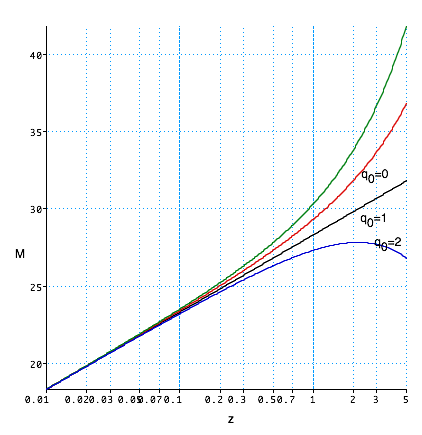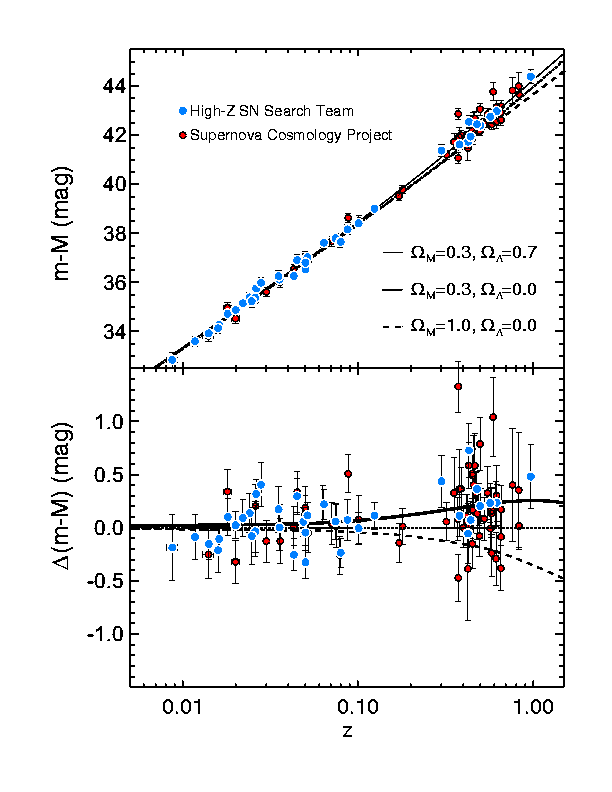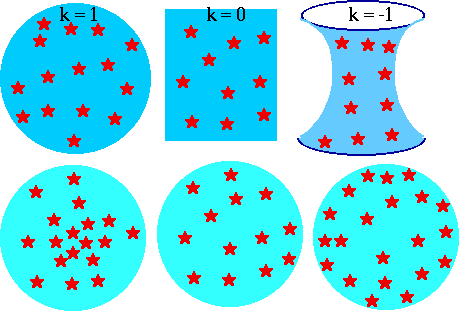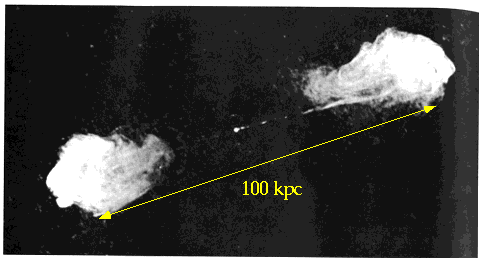What is q₀ if universe is empty?
What is it if ρ = ρc?
$\color{red}{\int_{t_{\min } }^{t_o } {\frac{{dt}}{{R\left( t \right)}}} = \int_0^{\sigma '} {\frac{{d\sigma }}{{\sqrt {1 - k\sigma ^2 } }}} }$ (note that in some k=1 models we can see the whole universe!)
again can expand result to give $\color{red}{l = \frac{{LH_0 ^2 }}{{4\pi c^2 z_{}^2 }}\left[ {1 + \left( {q_0 - 1} \right)z + ...} \right]}$, where q₀ is the "deceleration parameter".
| Since we measure magnitudes, better to use $\color{red}{m - M \approx 25 - 5\log H_0 + 5\log \left( {cz} \right) + \left( {1 - q_0 } \right)z}$ |  |
Hence importance of 1a supernovae: since we know (maybe) L, we can get $q_0$ directly.

$\color{red}{l_{tot} = \frac{{cn\left( {t_o } \right)}}{{R\left( {t_o } \right)}}\int_{t_{\min } }^{t_o } {L\left( t \right)R\left( t \right)dt} }$
so it will be finite for tmin = 0 (i.e. models with a Big Bang) but allows us to rule out other models
| Note that all have same density of galaxies but (e.g.) k = 1 has fewer galaxies at large distances
(Earth has less land at large distance than a flat plane would have!) |
 |
Observationally this could be done via Hubble plot at very large distance:
Unfortunately, only individual obejcts that can be seen at these red-shifts are quasars: these have evolved since the BB and hence cannot be used as constant density markers

